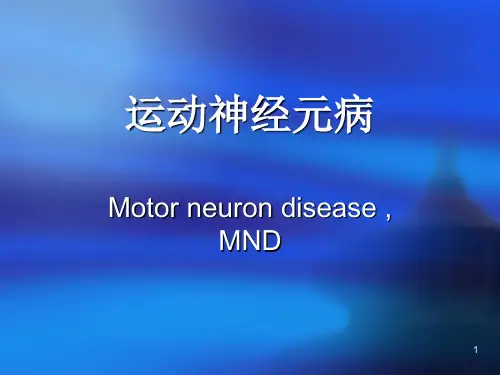神经系统变性疾病
是一组原因不明的累及CNS的疾病 选择性地累及1-2个功能系统的神经细胞引 起受累部位特定的临床表现
大脑皮质------痴呆 基底节和脑干---------运动障碍 小脑------------共济失调
共同病理特点是病变部位的神经元的萎缩、 死亡和星形胶质细胞的增生
美国前总统里根,1994 年确诊为 阿尔兹海默 症。
2.神经原纤维缠结
神经细胞浆中神经原纤维增粗扭曲形成缠结。有 时在大脑皮质,海马锥体细胞内呈火焰状缠结,基 底核内神经细胞浆内呈丝团状缠结。 HE染色往往较模糊,呈淡蓝色,而银染显示清
电镜下:为 7-10nm 双螺旋缠绕的微丝构成,主要 成分是过度磷酸化的Tau蛋白。
分布:海马、杏仁核、颞叶内侧、额叶皮质、锥 体细胞内、Meynert基底核、蓝斑等。 意义:神经细胞内神经原纤维缠结是神经细胞趋 向死亡的标志。
Hirano body
噬酸性棒状 肌动蛋白
Alzheimer's disease is usually diagnosed clinically from the patient history, collateral history from relatives, and clinical observations, based on the presence of characteristic neurological and neuropsychological features and the absence of alternative conditions. Advanced medical imaging with CT or MRI, and with single photon emission computer tomography (SPECT) or positron emission tomography (PET) can be used to help exclude other cerebral pathology or subtypes of dementia. The diagnosis can be confirmed with very high accuracy post-mortem when brain material is available and can be examined histologically.










